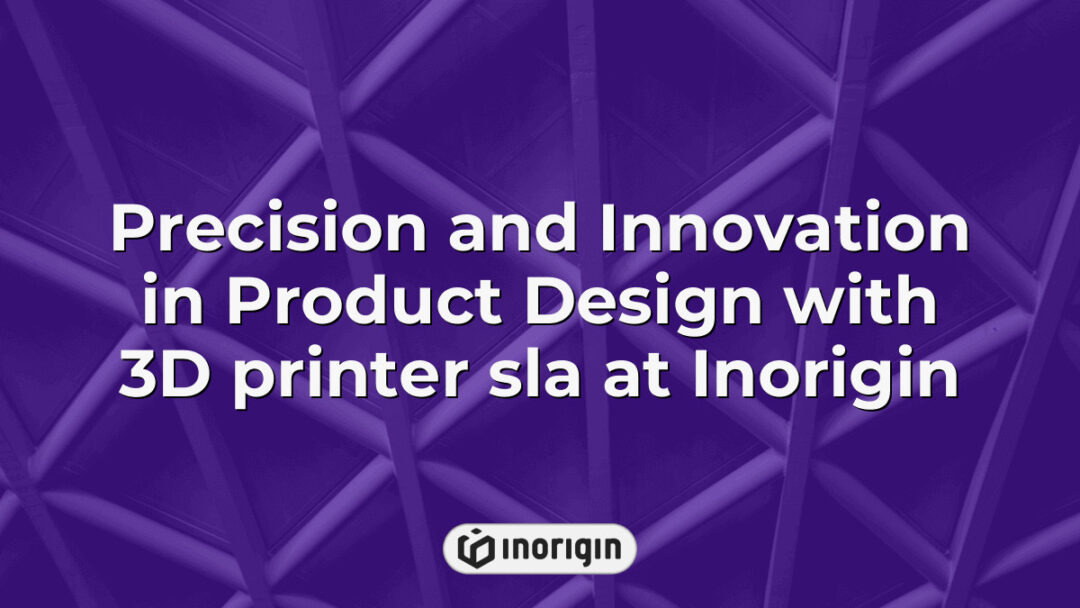In recent years, the integration of 3D printing technology into educational environments has gained significant momentum, with over 70% of American schools reporting the inclusion of this innovative tool within their curricula. The concept of a "3D Printer Library" emerges as an exciting solution to promote accessibility and creativity in design and engineering among students, hobbyists, and professionals alike. By establishing centralized repositories that house various 3D printers alongside extensive databases of digital models available for public access, these libraries foster collaborative learning experiences while encouraging users to explore an array of applications ranging from rapid prototyping to intricate artistic expressions. This article delves into the transformative potential of 3D Printer Libraries, examining their impact on education, innovation, and community engagement within the broader context of technological advancement.
| Αποψη | Key Takeaway |
|---|---|
| Definition and Purpose | A 3D printer library is a centralized facility providing access to various 3D printing technologies and design repositories, promoting innovation and accessibility for students, professionals, and creators. |
| Educational Impact | Integrating 3D printer libraries into curricula enhances design thinking and engineering skills, supporting hands-on learning and interdisciplinary collaboration. |
| Επιλογή εκτυπωτή και υλικού | Choosing appropriate printers like FDM and DLP resin models and compatible materials ensures quality outputs aligned with user expertise and project requirements. |
| Λειτουργική Αποδοτικότητα | Implementing systematic management, including maintenance schedules and queue systems, maximizes printer uptime and user satisfaction. |
| Design Repository Development | Curating diverse, high-quality 3D design files tailored to community needs fosters creativity and eases users’ access to functional print models. |
| Δέσμευση της Κοινότητας | Hosting workshops, collaborative projects, and innovation challenges cultivates a dynamic environment that strengthens community ties and technical skills. |
| Financial Sustainability Strategies | Diversified income sources such as membership fees, partnerships, and educational programs ensure the long-term viability of 3D printer libraries. |
Setting Up A 3D Printer Library
The establishment of a 3D printer library presents an intriguing fusion of technology and communal resource sharing that promises to revolutionize access to advanced fabrication tools. Initially, the concept may seem deceptively simple: providing several 3D printers for public use within a designated space. However, the operational complexities soon reveal themselves—from managing printer queues efficiently to ensuring consistent maintenance of diverse printer models. As users arrive with their varied projects ranging from intricate prototypes to educational applications, the dynamics of collaboration and technical support emerge as vital components in maximizing the utility of this shared resource. Introducing a structured queue system facilitates equitable access while fostering an environment where knowledge exchange among patrons can thrive, thus enhancing both individual and collective learning experiences. Ultimately, establishing such a library serves not merely as a facilitation of machinery usage but also as a catalyst for innovation and community engagement in the realm of digital manufacturing technologies.
Choosing The Right 3D Printers And Materials
Selecting the appropriate 3D printers and materials for a library setting resembles assembling a complex puzzle, wherein each piece must align perfectly to achieve a functional and aesthetically pleasing whole. Initially, the cost of various 3D printers can significantly influence decisions; therefore, it is essential to conduct a thorough evaluation of budgetary constraints alongside the desired features of each machine. Subsequently, considerations regarding materials must be undertaken, as they directly impact both print quality and usability for diverse projects. Furthermore, it is critical to acknowledge that different printing technologies — such as Fused Deposition Modeling (FDM) versus Stereolithography (SLA) — possess unique material compatibilities, thus dictating choices depending on intended applications. In addition to these factors, assessments should include user proficiency levels and the types of designs prevalent within the community served by the library. Ultimately, an informed approach encompassing costs, printer selection, and material characteristics will ensure that the 3D printer library meets its objectives effectively while fostering innovation among users.
Developing A Collection Of 3D Designs
Developing a collection of 3D designs represents an essential undertaking that enhances the utility of 3D printers while also enriching user experience. This activity can be described as a meticulous crafting process whereby individuals curate models in digital formats such as STL files, which serve as the foundational blueprint for subsequent printing. To better comprehend this intricate endeavor, it is useful to consider three primary components: first, the identification of user needs and preferences; second, the exploration of various design services available online that cater specifically to diverse interests; and third, adherence to optimal file formatting practices to ensure compatibility across different printing technologies. Each component plays a vital role in shaping a cohesive design portfolio suited for specific applications or projects. As users engage collaboratively with these resources—whether by sharing their own creations or drawing inspiration from existing repositories—the richness and accessibility of 3D printed outputs become markedly more pronounced, resulting in a vibrant community dedicated to innovation and creativity within the realm of additive manufacturing.
Managing And Maintaining A 3D Printer Library
The management and maintenance of a 3D printer library can be likened to tending a garden, where each device symbolizes a unique seed that holds the potential for creativity and innovation. To cultivate this environment effectively, it is imperative to establish systematic protocols for the operation of 3D printers housed within such libraries. Initially, an inventory system should be implemented to monitor the availability and condition of each printer, which not only facilitates efficient user access but also ensures regular maintenance checks are conducted. Furthermore, attention must be given to the associated printing costs; these encompass both material procurement and operational expenses that may arise from dynamic user demands. As libraries evolve into hubs of technological advancement, training programs for users can enhance skills while promoting responsible usage—thus fostering a community aware of both creative possibilities and cost efficiencies. By integrating strategic management practices within the framework of a 3D printer library, institutions position themselves as vital resources in an increasingly digitized landscape.
Engaging The Community With 3D Printing Programs
In the realm of creativity, envisioning a thriving forest can serve as an allegory for fostering engagement within a community through 3D printing programs. Just as trees in a forest work symbiotically to support diverse flora and fauna, so too can individuals from varied backgrounds collaboratively leverage 3D printers to cultivate innovation and learning opportunities. To achieve this, it is essential to establish structured initiatives that invite project requests from local inhabitants, thereby promoting inclusivity and shared ownership over communal resources. Furthermore, organized workshops or events can be implemented where participants explore fundamental principles of design while utilizing advanced d printing technologies. These interactive experiences not only enhance practical skills but also reinforce interpersonal connections among attendees. By facilitating these avenues for creative expression and technical skill development, communities may strengthen their collective identity and resilience in an increasingly digital world. Ultimately, actively engaging residents in the multifaceted applications of 3D printing serves to illuminate potential pathways for collaboration and knowledge exchange within the ecosystem of local makers.
Συχνές Ερωτήσεις
What Safety Precautions Should Be Taken When Using A 3D Printer?
The utilization of 3D printers encompasses a range of safety precautions that are essential for mitigating risks associated with their operation. Firstly, the workspace must be adequately ventilated to prevent the accumulation of potentially harmful fumes emitted during printing, particularly when using materials such as ABS or PLA, which can release volatile organic compounds (VOCs). Additionally, user adherence to proper handling techniques is crucial; this includes wearing heat-resistant gloves when interacting with components that may reach elevated temperatures, such as the print bed and nozzle. Furthermore, it is imperative to maintain a safe distance from moving parts to avoid accidents during the printer’s operational phase. Equally important is ensuring that electric connections are secure and compliant with relevant electrical standards, thereby reducing the risk of short circuits or fires. Lastly, operators should familiarize themselves with emergency procedures tailored specifically to 3D printing environments to enhance preparedness in case of equipment malfunction or material combustion. These measures collectively underscore the importance of establishing a safe working environment conducive to responsible 3D printing practices.
How Can I Troubleshoot Common 3D Printing Issues?
Imagine a chef meticulously preparing a complex dish only to find that the soufflé has collapsed; such is the experience of many individuals when encountering problems during 3D printing. To effectively troubleshoot common 3D printing issues, it is essential first to identify the type of problem, as these can range from mechanical failures and filament-related concerns to software glitches. For instance, under-extrusion often manifests as thin or incomplete layers and may signal an issue with the nozzle diameter or filament feed rate; addressing this typically requires inspecting for clogs in the nozzle and recalibrating the printer settings accordingly. Similarly, adhesion problems may occur if models fail to stick to the print bed properly, which can be mitigated by ensuring proper surface preparation—such as applying adhesive substances like glue stick or tape—and verifying that the bed temperature aligns with material specifications. Transitioning to dimensional inaccuracies, discrepancies between printed dimensions and intended designs necessitate adjustments in firmware settings or measurement assessments of both nozzles and belts for wear over time. Each troubleshooting step not only restores functionality but also fosters a deeper understanding of 3D printing mechanics, ultimately enhancing proficiency in utilizing this sophisticated technology for various applications.
What Are The Environmental Considerations When Using 3D Printers?
The environmental considerations associated with the use of 3D printers are increasingly relevant in the context of sustainable manufacturing practices. First, the materials used in 3D printing, typically plastics such as polylactic acid (PLA) and acrylonitrile butadiene styrene (ABS), have significant implications for ecological health. While PLA is derived from renewable resources like cornstarch and is generally biodegradable under industrial composting conditions, ABS poses challenges due to its reliance on petroleum-based sources and non-biodegradability, leading to concerns regarding plastic waste accumulation. Moreover, emissions resulting from the melting processes during operation may release volatile organic compounds (VOCs), which could contribute to indoor air pollution if proper ventilation measures are not implemented. Additionally, energy consumption in 3D printing operations varies depending on printer technology and print duration; therefore, selecting efficient models can mitigate carbon footprints over time. Furthermore, post-processing steps often involve solvents or chemical treatments that require careful handling to avoid adverse environmental impacts. Consequently, a comprehensive assessment of these factors reveals that while 3D printing offers innovative solutions for product development and customization, it necessitates an awareness of its potential consequences on both local ecosystems and broader climatic issues within contemporary environmental discourse.
How Can I Make My 3D Printing Library Financially Sustainable?
Establishing financial sustainability for a 3D printing library can be likened to nurturing a delicate ecosystem, where every component must interact harmoniously to thrive. Numerous strategies exist that facilitate the stable operation of such libraries while promoting accessibility and community engagement. First and foremost, generating diverse revenue streams is essential; this may involve charging nominal membership fees or access rates that reflect usage levels. Secondly, developing partnerships with educational institutions or local businesses can create mutually beneficial arrangements, potentially including sponsorships or collaborative projects that enhance visibility in the community. Lastly, organizing workshops and classes not only provides an educational service but also generates income through participation fees.
- Encourage innovation by hosting competitions.
- Foster creativity within communities for broader interest.
- Promote environmental awareness alongside technological advancement.
Effective marketing tactics are equally important in raising awareness of the library’s offerings while attracting new users who will contribute to its growth. Engaging storytelling about success stories derived from the use of 3D printers can galvanize public support and encourage individuals to participate actively—a necessary condition for fostering long-term viability. Through these multifaceted approaches—diversifying revenue sources, forging strategic partnerships, and employing compelling outreach—the financial sustainability of a 3D printing library can be achieved while simultaneously enriching the community it serves.
What Types Of Educational Resources Should I Provide For Users Of The Library?
The quest for knowledge in the realm of 3D printing necessitates a robust array of educational resources that cater to users’ diverse needs. Initially, providing foundational materials such as introductory workshops and online tutorials serves as an essential stepping stone for novice practitioners. These initial engagements can lay the groundwork for more advanced learning opportunities, including specialized courses on design software and material science, which are crucial for users aiming to enhance their skills. Moreover, integrating hands-on projects not only fosters experiential learning but also cultivates creativity among participants.
Furthermore, it is imperative to develop comprehensive resource guides encompassing technical documentation, troubleshooting tips, and updated industry standards related to 3D printing technologies. Such resources enable users to navigate challenges effectively while promoting best practices within the community. To further enrich the educational offerings, establishing partnerships with local educational institutions or industry professionals can facilitate guest lectures and seminars focused on emerging trends and innovations in 3D printing.
Additionally, creating a digital platform where users can access forums for discussion and collaboration nurtures a sense of community at the library. This collaborative approach encourages peer-to-peer learning—allowing individuals to share insights and experiences that ultimately enhance collective understanding. Engaging users through competitions or maker events could also motivate continuous skill development while fostering enthusiasm about technological advancements in 3D printing. The proliferation of these targeted educational resources will undoubtedly ensure sustained engagement and empowerment among library patrons in their creative endeavors within this dynamic field.
Σύναψη
The establishment of a 3D printer library not only fosters innovation and collaboration but also holds transformative potential for communities. However, as technology continues to advance and new materials emerge, what uncharted possibilities await those who dare to explore this evolving landscape? The future beckons with challenges yet to be uncovered.
Σχετικές αναρτήσεις:
- Οφέλη και προηγμένες πλατφόρμες βιβλιοθήκης τρισδιάστατης εκτύπωσης που ενδυναμώνουν τους σχεδιαστές και τους μηχανικούς προϊόντων
- Ενσωμάτωση βιβλιοθήκης τρισδιάστατης εκτύπωσης για προηγμένο σχεδιασμό προϊόντων και καινοτομία στην Inorigin
- Τι είναι το stl και ο αντίκτυπός του στον προηγμένο σχεδιασμό προϊόντων και την τρισδιάστατη εκτύπωση στην Inorigin
- Τρισδιάστατοι εκτυπωτές κοντά μου και προηγμένες τοπικές υπηρεσίες που τροφοδοτούν την ακριβή πρωτοτύπωση προϊόντων
- Τι σημαίνει το STL για την τεχνολογία, τη βιομηχανία και τα πολιτιστικά πλαίσια
- Πλήρεις πόροι και συμβουλές ασφάλειας για δωρεάν στοιχεία μπλέντερ στο Inorigin




